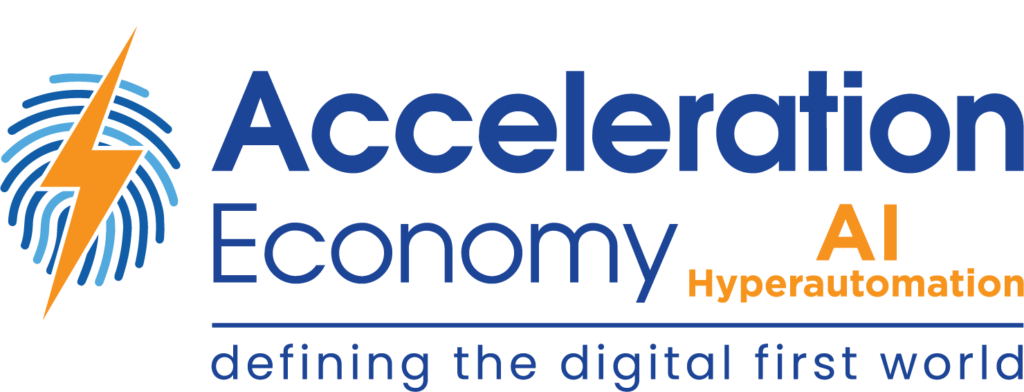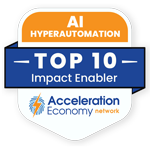Retail procurement is tough: Think of the tens of thousands of retail SKUs, often produced across the globe by single-sourced suppliers. There are tight sales margins, many under 2%. Then there are the tight timetables, where delivery of initial stock and reorders must take place within a single season.
Enter hyperautomation: a process of automating business processes, tasks, and activities with the use of technologies such as artificial intelligence (AI), machine learning (ML), and robotic process automation (RPA). According to Acceleration Economy analyst (and CIO) Kenny Mullican, hyperautomation is “quickly becoming the go-to solution for companies looking to streamline operations and improve efficiency.”
The National Retail Federation states that the top three factors that make consumers choose a specific brand are the ability to find goods quickly and easily, high-quality customer service, and speedy and simple checkouts. In this analysis, we’ll look at how hyperautomation can help retail businesses deliver better customer experience (CX) in these three areas while improving retail procurement operations at the same time.
Customer Service
Customer support interaction used to be handled exclusively by individuals, in person or via a phone call. Now chatbots, pre-programmed with answers to commonly asked questions, are increasingly being used. With chatbots as the first line of defense, only the more complex customer service problems are diverted to human beings to handle.
But by adding in AI and robotic process automation (RPA), chatbots can have much more sophisticated “conversations” — for example, the RPA can retrieve data on orders or payments, and the AI piece can predict delivery time or develop options when there is a problem. Create chatbots with natural language processing (NLP) capabilities, and the interactions get closer to mimicking a conversation with an actual person.
Returned goods can similarly benefit from hyperautomation and therefore improve customer service. Items may be handed to and accepted by a human, but RPA can handle the information processing and the issuing of credits.
Which companies are the most important vendors in AI and Hyperautomation? Click here to see the Acceleration Economy Top 10 AI/Hyperautomation Short List, as selected by our expert team of practitioner-analysts
Demand Planning
Predicting consumer demand is a significant use case for hyperautomation. By using AI and machine learning, retailers process more data to develop demand predictions. Not just predicting trends based on past experience, but incorporating economic and demographic data in developing demand estimates. More sources of quality data going in result in better demand planning coming out. That helps get the right quantities of product in the right places, making it easier for customers to have a positive buying experience.
Customers have more venues now in which to obtain goods beyond brick-and-mortar stores, with online shopping, mobile apps, pop-up shops, and brand collaborations providing additional ways to shop.
Hyperautomation can populate multiple streams with availability and customer data so that a history of all purchases can be available, regardless of the channels that were used.
Smart Stores
Today, shoppers sigh in frustration at the demise of the checkout staff and the rise of self-checkouts which, in the hands of infrequent users, can be a nightmare of delays and errors. Hyperautomation in this space would improve upon today’s self-checkout experience by establishing checkout-free stores that leverage Internet of Things (IoT) sensors on the shelves, vision systems, and inventory replenishment robots to replace the stock as it’s removed.
Procurement Benefits
Many of these changes directly affect retail purchasing teams, whether they are buyers who obtain goods for resale or procurement professionals who handle the goods and services consumed within an organization. Some examples:
- Hyperautomation provides access to data up and down the supply chain, not just with suppliers but with their downstream suppliers as well. Using AI and machine learning, potential inventory shortfalls or delays can be identified in advance. With more information flagging possible disruptions, procurement teams can spend more time conceiving and implementing contingency plans.
- Advanced analytics helps retail buyers make better buying decisions. The ability to more accurately predict changes in demand will ultimately result in fewer unwanted goods to dispose of and fewer out-of-stock situations.
- The data entry tasks so numerous in the purchase-to-pay process can be automated, with improvements in accuracy and speed.
- A proliferation of smart stores means that the items being purchased by the back office purchasing teams will change — more sensors and robotics instead of registers and conveyors. So the required category expertise of the procurement community is changing.
Closing Thoughts
Hyperautomation is a key enabler in getting consumers what they want in the way they want it. It shouldn’t consist of a “one-and-done” project; rather, it should be part of a systematic strategy to use technology to automate tasks that customers don’t see, and to improve their shopping experience. For buyers and support procurement professionals, it’s a great opportunity to reduce the disruptions and frustrations that can consume so much of their time, and focus their energies instead on understanding and meeting customer demand.
Looking for real-world insights into artificial intelligence and hyperautomation? Subscribe to the AI and Hyperautomation channel:











